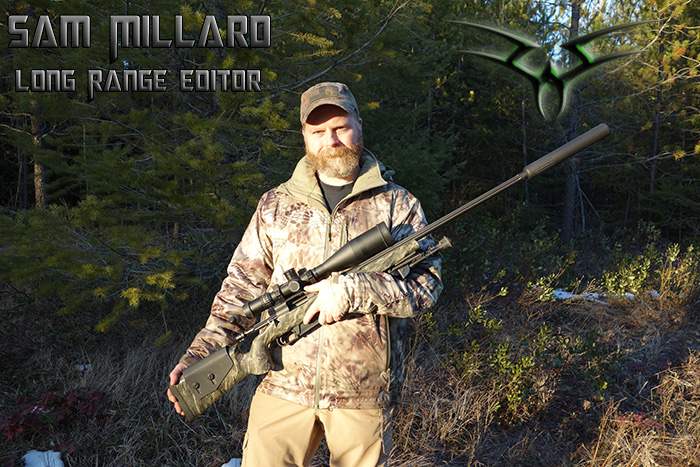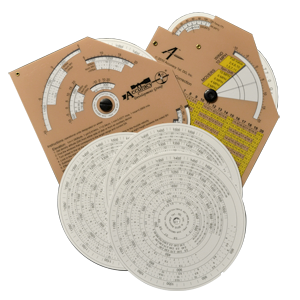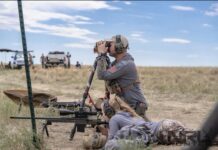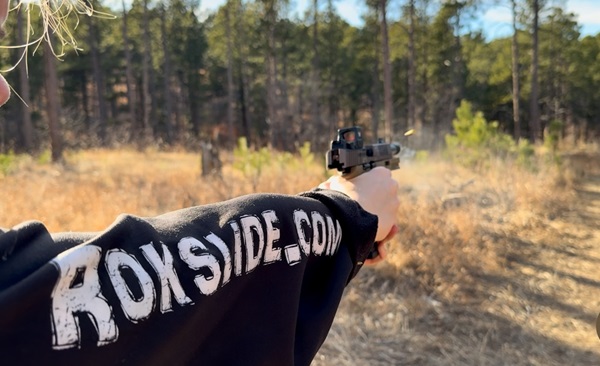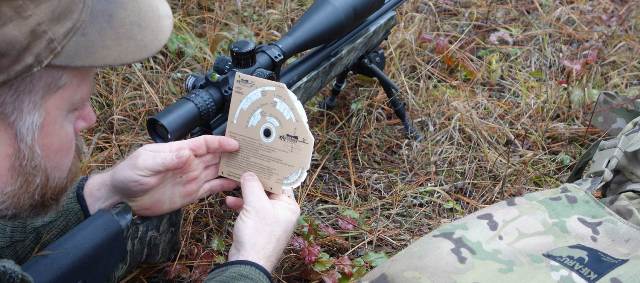
Accuracy 1st Development Group’s Whiz Wheel
By Sam Millard, Long Range Editor
The quality of tools available to the long range shooter has steadily increased over the last several years. Rifles, optics, and support equipment, have all improved to the point that most riflemen don’t find themselves held back by the gear available to them. One of the most important tools is the one that ties it all together—the ballistic calculator.
The Whiz Wheel, from Accuracy 1st Development Group, is an analog ballistic calculator. It consists of a universal sleeve and custom printed solver wheels that match the ballistics of the ammunition being used. The sleeve measures 5″x 5″ and weighs 1.7 ounces with three solver wheels. Laser engraved data and flexible plastic construction make the unit durable and weatherproof.
The solver wheels are the heart of the system. While the sleeve is generic, the solver wheels are printed for each individual rifle and ammunition combination. They are available for some commercially produced military ammunition and estimated rifle data, but the best way to order these is with your own proven data printed on them. Simply provide Accuracy 1st with the caliber, weight, style, and brand of bullet, average muzzle velocity, twist rate of barrel (for spin drift), sight height, and measurement of choice (MOA/MIL, Meters/Yards). After that, you’ll receive a custom printed solver wheel that will be accurate right out of the box.
Of course, output of firing solutions will only be as accurate as the input of rifle and ammo data, so take the time to get it right. The wheels come with the corresponding data information printed on the outer rim as well as the center hub area. The wheels are held in place by a slotted Chicago screw and are easily changed. The wheels have correction data for shooting into the transonic range of the ammunition, usually 1300 to 1500 yards, depending on the cartridge.

With the amount of information printed on the sleeve and solver wheel, the Whiz Wheel appears to be quite complicated to use. However, Accuracy 1st provides clear and concise directions for use on the sleeve itself, as well as a comprehensive user’s guide in the packaging.
The Whiz Wheel calculates a correction for air density based on Density Altitude (DA). At the bottom right of the sleeve, there is a permanently affixed wheel to calculate DA if you are not reading from a device such as a Kestrel. If you prefer to use station pressure instead of DA, there is a window and chart on the back of the sleeve to convert station pressure and temperature into DA. With this system, it is possible to come up with a reasonably accurate firing solution with basic tools. If you know the elevation and air temperature, Density Altitude, or the combination of station pressure and air temperature, it will work. Density Altitude, expressed as DA (KFT), is used for all corrections on the wheel, including wind deflection.
Once range-to-target and DA has been determined, there are four options to obtain an elevation correction, depending on range. There are four windows in the front of the sleeve above the center hub. The top left window is for long range with low DA, and the top right represents long range with high DA. The two windows closest to the center are for mid-range and short-range shots. I found that the mid-range window will likely cover most hunting scenarios, with corrections displayed for shots ranging from 400 yards to 800 yards, and a very broad DA variable.
To find the correction, you simply spin the wheel until the proper yardage mark is aligned with the DA mark. At the bottom of the window, the correction in MOA or MILs is displayed. The correction window has three rows of numbers. This feature is what allows the shooter to “true” the Whiz Wheel to the actual corrections needed in the field. The middle number matches the ballistic information you provided when the card was printed. The top number represents a muzzle velocity (MV) that is 50 feet per second slower, the bottom number represents a MV that is 50 feet per second faster. The correction needed increases with the slower MV and decreases with the faster MV. This is a useful feature if your ammunition is temperature sensitive or your scope’s click values aren’t exactly what is specified.
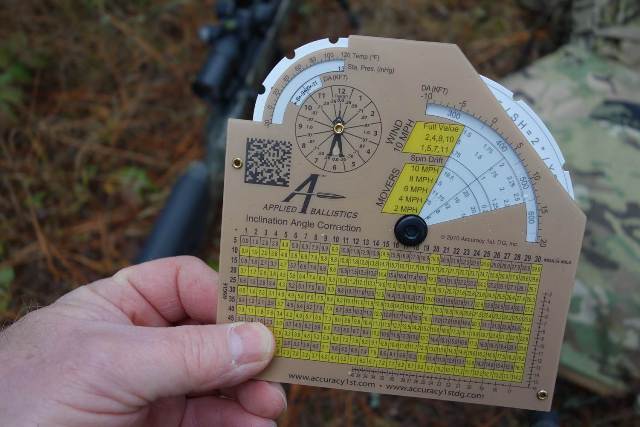
The back of the sleeve is where wind deflection and spin drift corrections are calculated. Because the Whiz Wheel was designed for military snipers, there is also a moving target window for calculating leads. Operation is the same as for elevation corrections. There will be some math required, as only a 10 mph wind correction is shown. There are three rows of correction values depending on general wind direction, as well as a pie chart showing cosines that correspond to clock positions if you want to do more math for an exact correction.
At the bottom of the sleeve, there is an Inclination Angle Correction chart. To adjust for a high angle shot, simply line up your elevation correction on the top row with the intersecting angle along the left side for the adjusted correction.
If you are looking for an alternative method to using a PDA-based ballistic solver, or want a backup to your existing one, the Whiz Wheel from Accuracy 1st Development Group deserves your attention. It offers the same battery-free dependability as a printed drop chart, while adding the flexibility to change with conditions. I found it easy to use and very accurate, comparing corrections to actual field shots I have taken with the rifle and ammunition. I wouldn’t hesitate to use it for all but extremely long shots. I would like to thank Accuracy 1st Development Group’s Robert Brewington and Jeff Overholser for giving me the opportunity to share the Whiz Wheel with Rokslide’s members!
You can contact Accuracy 1st through their website here
You can discuss this article or ask the author questions here
You can also enter to win one of five Whiz Wheels before 5/18/15 by clicking on the link directly above
